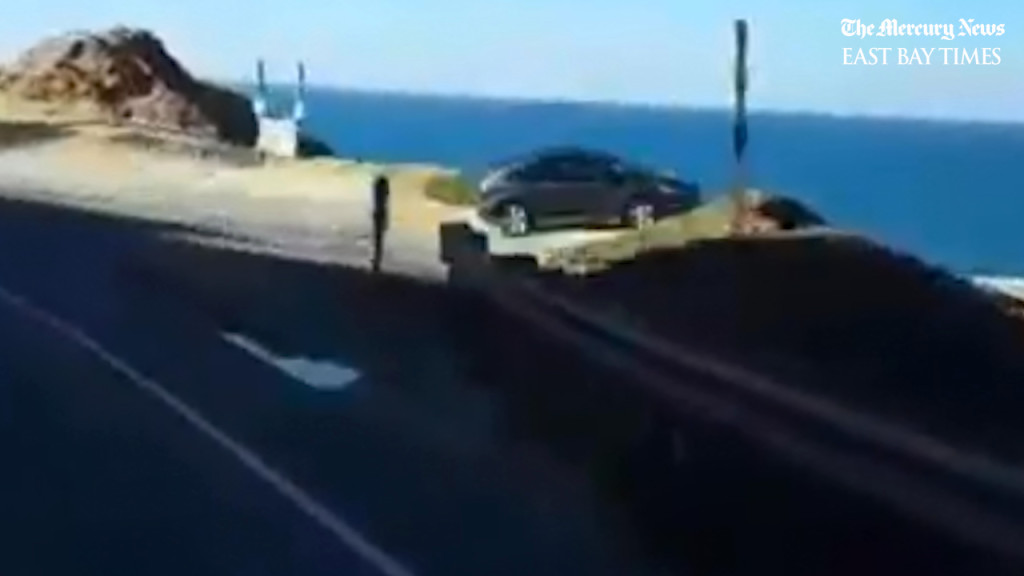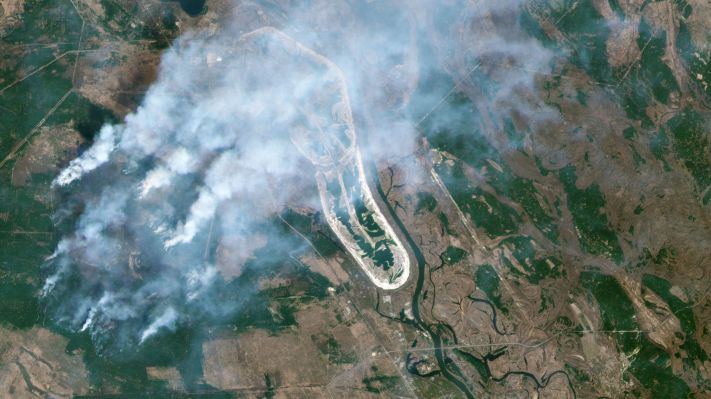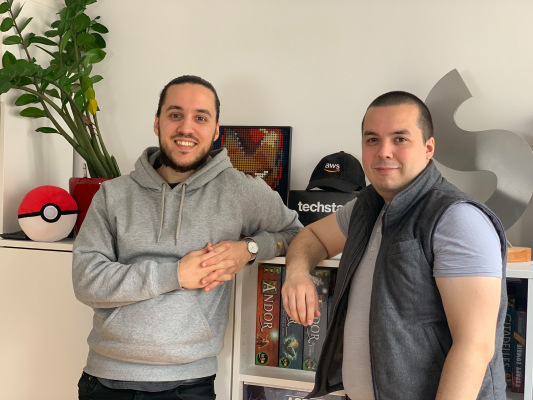A video of a dark green Lexus careening off a cliff along the San Mateo County Coast went viral late last month, sparking a frantic and fruitless search for the SUV — and a frenzied debate on social media: Was the video a “deepfake”?
The growing phenomena of audio and video manipulated through artificial intelligence has spoofed Facebook CEO Mark Zuckerberg’s online presence and morphed “Saturday Night Live” star Bill Hader into Oscar winning actor Al Pacino. And even though the California Highway Patrol is vouching for the veracity of the stunning Highway 1 crash video that has left millions of viewers in awe, deepfake experts say it’s another example of how the power of digital illusions is making us question everything we see online.
“Imagine a world where deepfakes are prevalent. That will allow anyone to deny and dispute anything that they don’t like,” said Shamir Allibhai, the CEO of Amber, a Palo Alto-based media forensics company founded in 2017. “The existence of fake video gives ammunition to anybody to delegitimize genuine evidence.”
Companies like Allibhai’s are aiming to solve the deepfake problem by either identifying media that’s been manipulated or empowering producers to make incorruptible video files using encryption technology known as blockchain. Amber takes the latter approach with a new camera app users can download to record videos encrypted with a “fingerprint” using Ethereum blockchain technology.
The Amber app saves location data in its video files, creating a ledger that can be verified by the company to prove the recording was not altered between capture and distribution.
In the case of the San Mateo cliff crash, many social media users insisted the video was a deepfake:
I boldly predict that this video is a Deep Fake.https://t.co/3wkpDCUS1p
— Wíñchéstér Öscår
(@scorpio8675309) January 5, 2020
But Allibhai’s hunch is the video is legit.
“My gut feeling is this video is probably not deepfake,” he said.
That’s because, unlike more traditional visual effects, deepfake videos are created by neural networks that need to be trained on a massive dataset that, in this case, would require thousands of videos of cars launching off cliffs.
CHP, for its part, has not wavered in its account of events. Investigators showed up about 20 minutes after the driver with dash-cam called in to report the crash at 10:38 a.m. and interviewed him on the spot, said Officer Bert Diaz.
A few days later, a couple that was driving in the white vehicle ahead of the man contacted CHP to confirm that they, too, had seen the car careen into the water below, Diaz said.
There’s a more traditional visual effect known as rotoscoping that also could have been used to fake such a video. It would have required someone superimposing a second clip of the dark green Lexus SUV launching out of the frame into the video CHP received from the witness. But because video metadata includes timestamps, experts say that’s also unlikely because such painstaking frame-by-frame editing takes hours and could not have been completed between 10:38 a.m. and 11 a.m.
It’s been almost two weeks, and CHP is still working through dozens of leads — some credible, some not — about missing persons and car parts along the coast, Diaz said. None have borne out so far. Car parts that later floated up off Highway 1 have not been confirmed as matching the vehicle’s description.
With fake news and video manipulation growing as a threat, DARPA, the U.S. Department of Defense’s research division, is working to solve the problem by developing algorithms to identify deepfakes. Through an initiative called MediFor, short for Media Forensics, the military hopes to detect the kinds of fake videos generated using programs such as FaceApp, FakeApp and DeepFaceLab.
Altered media is not a new problem; evidence dates back to at least 1865. The Library of Congress and researchers at Purdue University’s Video and Image Processing (VIPER) Laboratory pinpointed this print of U.S. President Abraham Lincoln’s head on an engraving of the body of Southern politician John C. Calhoun as the first known attempt at compositing, an image alteration technique that involved swapping Calhoun’s face for Lincoln’s. The Bronx Documentary Center asserts it was done by portrait painter Thomas Hicks because there were not enough “heroic-style” portraits of Lincoln in the wake of his assassination.

So-called “compositing” is still used today by visual effects artists working on Hollywood films and commercial photographers. Dan Cregan, a compositor whose credits include films from the “Star Wars,” “Hobbit,” and “Pirates of the Caribbean” franchises, is convinced the San Mateo County video is not a fake.
“The truth is you could make anything look real behind enough camera shake and image artifacts,” he said. “But a CGI (computer-generated imagery) car would have trouble looking right without all the data of when this happened.”
Cregan added that a talented compositor trying to fake the Highway 1 cliff video would be helped by the original dash-cam’s low resolution. But even then, Cregan argued, it could take days for a compositor to superimpose the car and fake the crash.
Staff Writer Fiona Kelliher contributed to this report. Anyone with information for CHP investigators about the crash can contact 415-407-3741.

















